The Atlantic puffin has become Iceland‘s most precious bird and a tourist attraction. He is both captivating and peculiar and has been nicknamed ‘Sea Parrot’, ‘Penguin of the North’ and even ‘Clown of the Sea’ and is also known as the Common Puffin. In Iceland we just call him ‘Lundi’. The Atlantic puffin has black and white feathers and a large and colourful beak. It is a seabird in the auk family that breeds in and around Iceland. Puffins can be seen in Iceland from early April until late August.
Here are some interesting facts about this beautiful bird, it’s everything you really need to know about puffins.
There are four species of puffins.
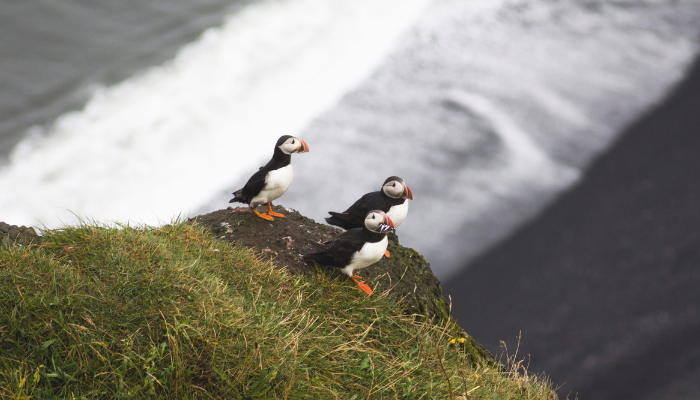
The one breeding in Iceland is the Atlantic puffin, the other species are the Horned puffin, Tufted puffin and Rhinoceros Auklet.
Sixty percent of the world’s puffins breed in Iceland.
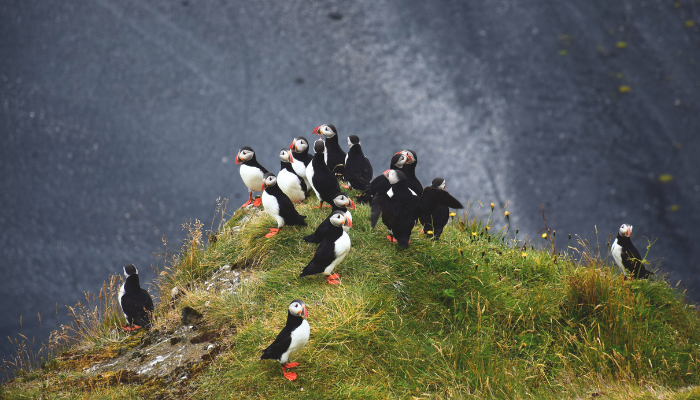
A puffin’s beak (or bill) changes colour during the year.

They only possess Technicolor beaks – and their matching orange feet – during the spring breeding season. Just before winter sets in, they shed the colourful outer beak, leaving a noticeably smaller and duller-coloured beak.
Puffins spend most of their lives out at sea, resting on the waves when not swimming.
They are well suited to life on the sea and mostly eat fish. They only return to land to breed.

Puffins are carnivores and live off small fish such as herring, hake and sand eels.
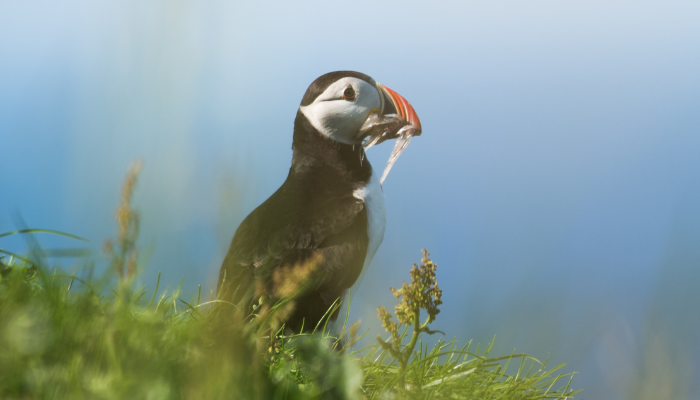
Puffins mate for life.
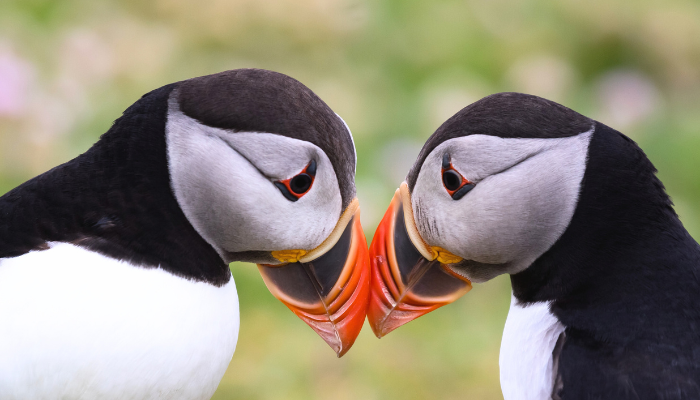
They seem to have very conservative family values and usually pair up with the same partner as previous years – some have been together 20 years! They raise their single chick (or puffling) over the course of summer and return every year to the same burrow with the same mate.
Puffins don’t make nests, they dig holes.
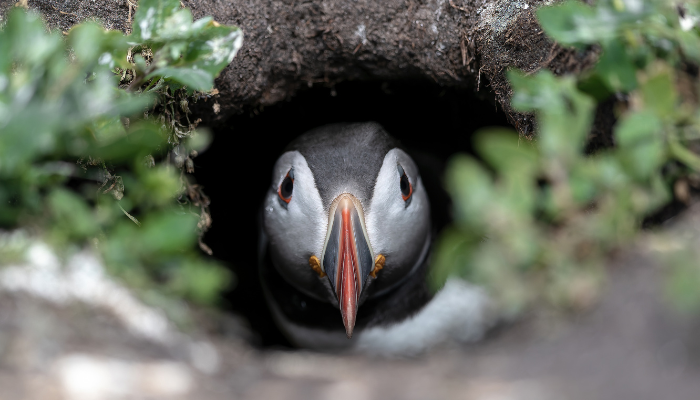
In spring and summer, thousands of puffins gather in colonies on the coasts and islands of the North Atlantic Ocean to breed. They dig their holes (or burrows) using their beaks and feet. They prefer to make their burrows in earth or between rocks on steep cliffs so predators cannot easily reach them. The burrows are up to one meter deep.
The female puffin only lays one egg each spring.
Like with some penguins, both parents take turns incubating the egg and caring for the puffling. The puffling spends most of its day inside the burrow, mostly feeds on fish and grows rapidly. After 36-45 days it is fully fledged and makes its way to the sea and does not return to land for several years.
Puffins live a long life.
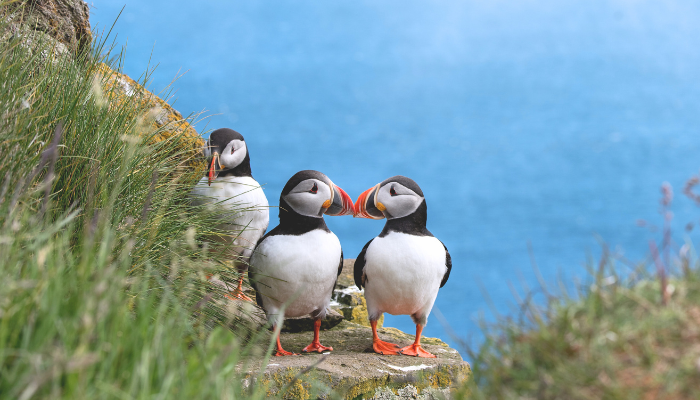
In the wild, these winged wonders live for around 20 years. Their main predator is the great black-backed gull, which can capture a puffin mid-flight or swoop in on a puffin on the ground. Herring gulls are also a threat because they steal puffins’ fish (sometimes right from their mouths), and they pull pufflings or eggs from their burrows.
The puffin is not the Icelandic national bird.
Iceland’s national bird is the magnificent Gyrfalcon, the largest falcon in the world. Slightly more graceful than the puffin, but not as likeable and colourful.
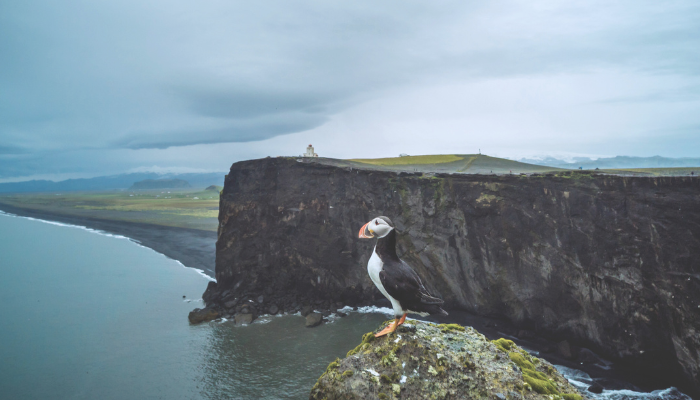
Puffins are smaller than you think.
They only measure about 30 cm from the tip of their beak to the end of their tail and stand at about 20 cm.
The puffin is a poor flier.
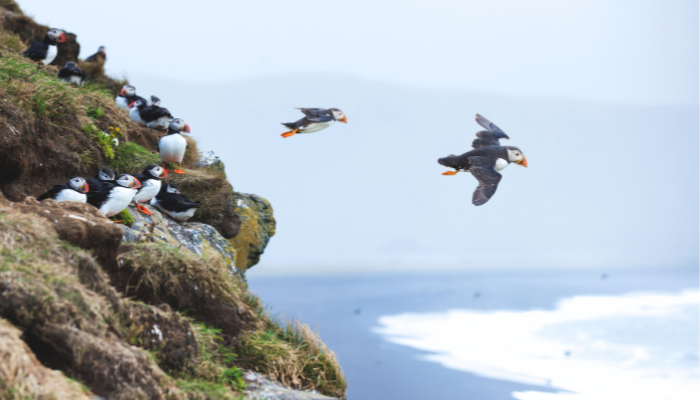
The puffin struggles to get in the air, beating its wings 300-400 times a minute just to stay in flight! They also have trouble landing, often crashing into the water or rolling onto the grass, tumbling into any other puffins that may be in their way.
The puffin is an excellent swimmer.
They use their wings to ‘fly’ underwater while using their feet to control direction. Puffins are incredible divers and can reach depths of 60 meters on their journeys to look for food.
Puffins may chatter up a storm at their breeding colonies, but they remain perfectly silent while at sea.
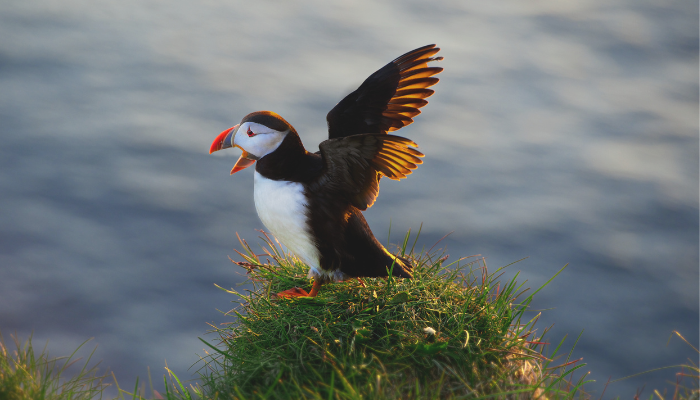
Puffins cannot fly unless they have a view of the ocean.
Want to see puffins with your own eyes? Book your Remote puffin tour at Ingólfshöfði or take an express boat tour from Reykjavík.
If you found this article interesting and helpful, you might also want to check out our article about the best hot springs and swimming pools in Iceland and how to drive in Iceland in the summer.